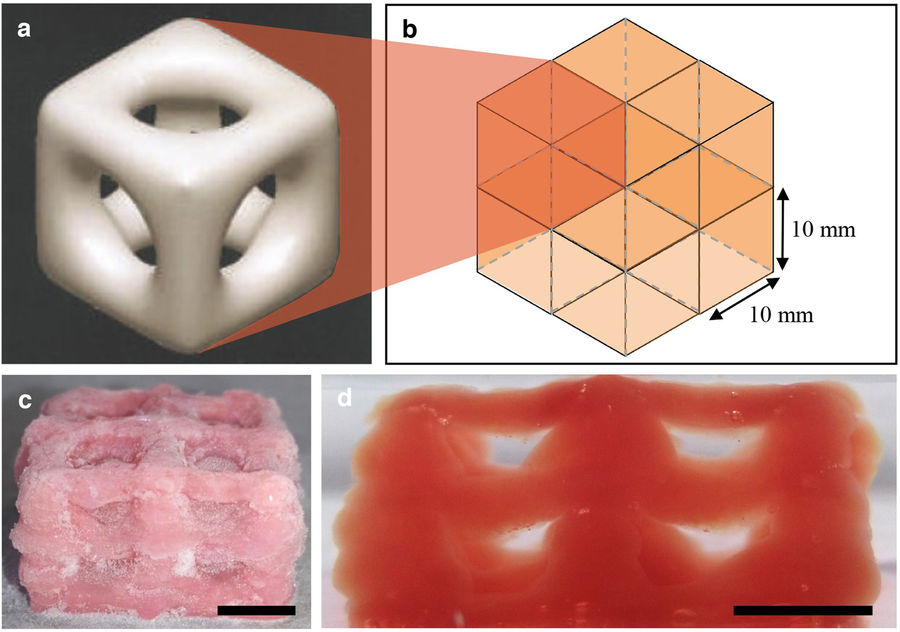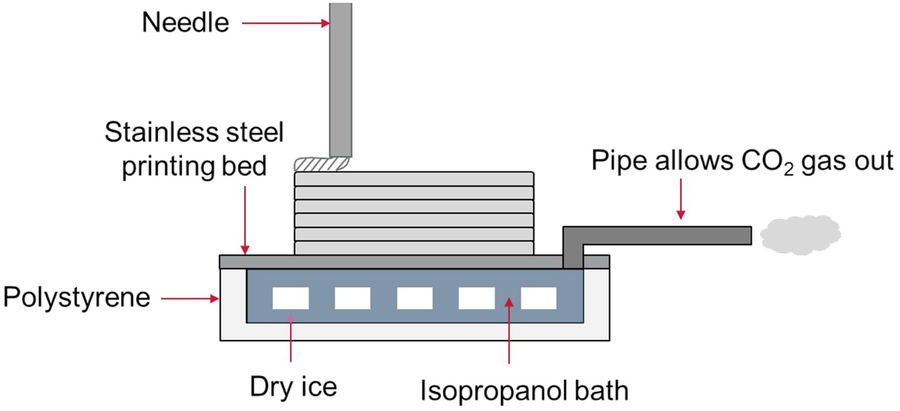
3D Printed Super-Soft Structures that Replicate Brain and Lungs
Researchers have developed a novel method to fabricate softer super-soft structures for organ regeneration.
Tissue and organ replication is no longer the stuff of science fiction, as ever more researchers turn toward 3D printing technologies to create biological structures.
A team at Imperial College London has established a new method to print 3D structures by combining cryogenics with additive manufacturing techniques. Cryogenic freezing utilizes very low temperatures to preserve biological tissue without ice damage.
In collaboration with Kings College London, the printed structures are soft enough to more accurately resemble organ tissue properties.
By matching the mechanical properties of body tissues, such designs could be employed during medical procedures.
3D printed tissues have the potential to be used for tissue regeneration. Indeed, seeding porous scaffolds with growing cells enables researchers to potentially regenerate damaged tissues. It’s a way of tricking the body into regenerating its own tissue faster. The method overcomes one of the core issues in tissue replacement – rejection of foreign cells by the body.
The 3D printing process uses solid carbon dioxide also called dry ice to quickly cool down the hydrogel ink extruding from the printer. Once thawed, the final gel remains soft to mimic body tissue. However, compared to previous attempts the structures remain stable.
By employing cryogenics, the researchers have been able to utilize phase changes. Dr Antonio Elia Forte, a researcher at the Department of Bioengineering at Imperial, said:
“Cryogenics is the novel aspect of this technology – it uses the phase change between liquid and solid to trigger polymerization and create super soft objects that can hold their shape. This means that the technology has a wide variety of possible uses.”

Super-Soft Structures Offer Possibility for Neuronal Tissue Regeneration
The latest innovation uses the softest scaffolds to date. These may be more suitable to tissue regeneration. Researchers also hope that the technique could be applied to neuronal or spinal cord tissues.
Zhengchu Tan, an engineering researcher at the Department of Mechanical Engineering at Imperial, explained:
“At the moment, we have created structures a few centimeters in size, but ideally we’d like to create a replica of a whole organ using this technique.”
3D printed structures were initially tested by seeding them with dermal fibroblast cells to regenerate the skin’s connective tissue. This demonstrated the potential of the technique to be used for stem cell growth.
The report has been published in the journal Scientific Reports by the Nature Publishing Group.
Source: Imperial College London

License: The text of "3D Printed Super-Soft Structures that Replicate Brain and Lungs" by All3DP is licensed under a Creative Commons Attribution 4.0 International License.
